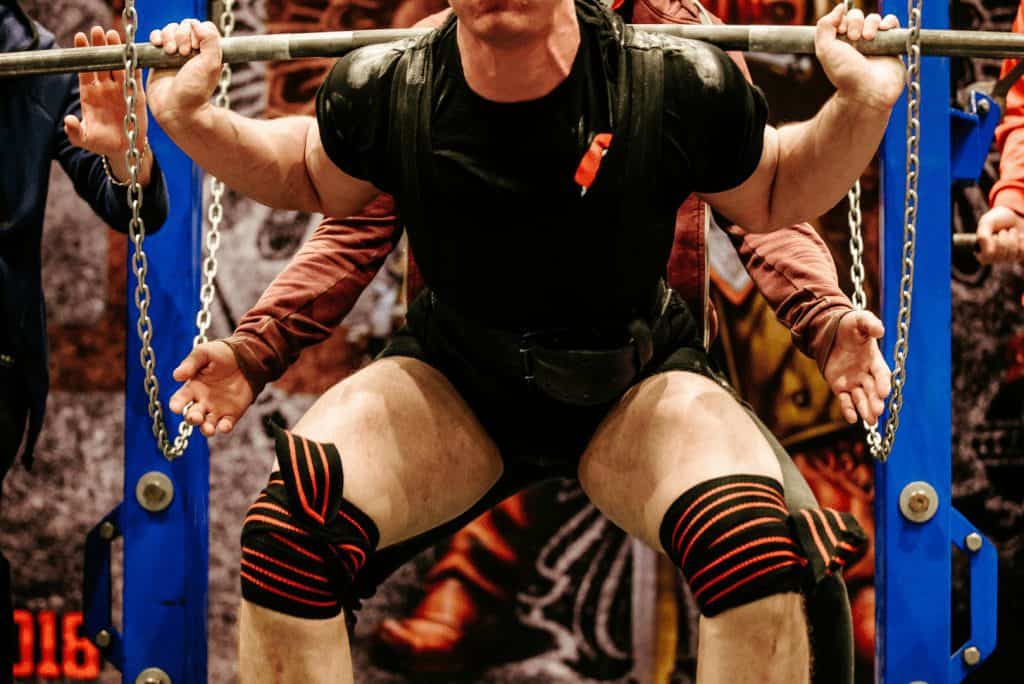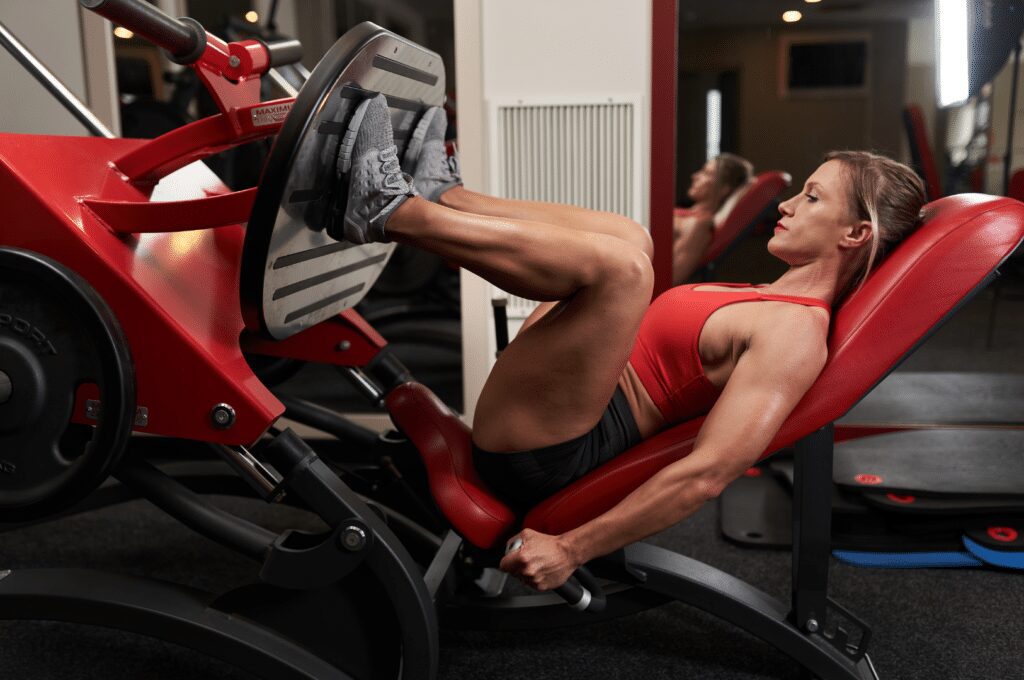This is another topic that has been heavily requested by you guys.
There are many people who enjoy the gym so much that they want to train as much as possible.
If you want to maximize muscle mass and recovery, you’d probably do better training 3-5 days per week.
In any case, you’re here to learn what a proper 6-day workout split looks like.
When done correctly, you can make even faster progress and gain more muscle as long as your recovery is on point!
Let’s go over the program now!
Table Of Contents
- 1 What Is A 6 Day Workout Split?
- 2 Push Pull Legs 6-Day Workout Routine
- 3 When To Train Each Muscle Group During Your Training Program
- 4 Recommended Exercises & Sequence
- 5 Exercise Selection Is Key For Muscle Building
- 6 Volume & Intensity
- 7 You MUST Do This While Using A 6 Day Workout Split
- 8 Should You Use a 6-Day Workout Routine To Build Muscle?
- 9 Why This Might Not Be A Good Idea For Beginner Lifters
- 10 Benefits Of A 6 Day Workout Split
- 11 Frequently Asked Questions
- 12 Conclusion
What Is A 6 Day Workout Split?
A 6 day workout split is a workout routine that involves working out six days a week, with each day dedicated to a specific muscle group.
The routine typically includes a mix of resistance training and cardio exercises.
The idea behind this workout split is to allow each muscle group to rest for 24-48 hours before it is worked again, allowing for optimal recovery and muscle hypertrophy.
Push Pull Legs 6-Day Workout Routine
If you want to train six days per week, you need to recover quickly.
To do this, the best split you can use is push pull legs, which I’ve gone over extensively in the past.

I won’t go over all the specifics on what push pull legs is, but it’s just a way to split up your workouts into different muscle groups.
Because of how it’s setup, you get a lot of overlap between similar muscle groups, so you can spend more time recovering before your next training session.
When To Train Each Muscle Group During Your Training Program
Here’s an example of the major muscle groups you’ll be hitting each training session during your training week.
- Sunday – Push 1 – Chest, Shoulders, Triceps, Traps
- Monday – Pull 1 – Upper Back, Lats, Biceps, Rear Delts
- Tuesday – Legs 1 – Quads, Hamstrings, Glutes, Calves
- Wednesday – Off
- Thursday – Push 2 – Shoulders, Chest, Triceps, Traps
- Friday – Pull 2 – Lats, Upper Back, Biceps, Rear Delts
- Saturday – Legs 2 – Hamstrings, Quads, Glutes, Calves
You can put Traps and Rear Delts on either Push or Pull, it really doesn’t matter too much.
I prefer how I set it up, but it’s fine either way.
Recommended Exercises & Sequence
For this training program, you pick one exercise per muscle group and increase your reps or weight each workout.
Here’s an example of some exercises I recommend and the sequence you should perform them in.
| Push 1 | Pull 1 | Legs 1 |
| Chest – Dumbbell Bench | Upper Back – Upper Back Chest Supported Rows | Quads – Hack Squat |
| Shoulders – One Arm Cable Lateral Raise | Lats – One Arm Lat Pulldown | Hamstrings – Seated Leg Curl |
| Triceps – One Arm Overhead Cable Extension | Biceps – Leaning One Arm Cable Curl | Glutes – Glute Bridge |
| Traps – Plate Raises | Rear Delts – Rear Delt Rows | Calves – Calf Raise |
| Push 2 | Pull 2 | Legs 2 |
| Shoulders – Seated Dumbbell Press | Lats – One Arm Landmine Lat Row | Hamstrings – Trap Bar Stiff Leg Deadlift |
| Chest – Incline Dumbbell Bench | Upper Back – Upper Back Pulldown | Quads – Leg Extension |
| Triceps – Cross-Body Cable Extension | Biceps – One Arm Cable Preacher Curl | Glutes – Hip Thrust |
| Traps – High Incline Dumbbell Row | Rear Delts – Cross-Body Rear Delt Rows | Calves – Seated Calf Raises |
No more, no less. You don’t need to do 20 different exercises for each muscle group.
Exercise Selection Is Key For Muscle Building

You need to make sure that you’re using the right exercises to bias the muscle you’re trying to work.
If you’re trying to train quads, using a low bar squat and sitting the hip’s back really far like in powerlifting isn’t a great idea.
Instead, you would use something like a hack squat with a narrow stance and your feet low on the platform.
Doing this will maximize your stability and allow you to get more knee flexion, which is how you train the quads effectively.
Adding to this, to maximize your training and ensure every muscle gets its focus, you need to make sure you’re training each head of a muscle group.
An example of this is that I have a dumbbell bench for the sternal head of the pec, and I also have a dumbbell incline bench for the clavicular head.
For the biceps, I have an exercise for the short and the long head.
Shoulders have one exercise for the anterior, medial, and two for rear delts as they’re usually a huge weak point for people.
There’s much more thought that goes into it than this, but definitely let me know if you want me to go more in depth on this topic.
It’s something that is largely ignored, when it’s actually quite important for muscular development.
Volume & Intensity
How many sets do you think you could do with this level of intensity?
These are two of the most important things you need to consider when training using a 6 day workout split.
Your volume and intensity will determine how well you recover and ultimately how fast you progress.
The faster you can progress in weight and reps while also allowing for recovery, the better your muscle gains will be.
Since you’ll be training 6 days per week, you need to keep your volume as low as possible.
With your volume low, you’ll need to push your intensity for muscular adaptations to occur.
Here’s what I recommend for sets and reps on this 6-day workout routine.
Sets
How many sets do you have left? pic.twitter.com/Vv62H0NMv4
— Muscle & Strength (@Muscle_Strength) June 30, 2014
As I mentioned before, we need to keep the volume low and the intensity high.
This is simply due to the fact that you can’t push your volume, intensity, AND frequency into the red.
You need to back something off, otherwise injuries will occur, and you’ll just be wasting your time.
On a lower frequency plan, I recommend between 1-3 sets per exercise.
In this case, 1 to 2 sets is going to be your absolute maximum.
I see 6-day training plans all over social media that prescribe five sets per exercise and half a dozen different movements.
This is stupid and doesn’t make any sense. If you train with that much volume and frequency, when the hell is the recovery process supposed to occur?
Exactly, that’s what I thought!
So, 1-2 sets per exercise is what I recommend.
For bigger movements such as Hack Squats, Pulldowns, Rows, Presses, and more, just one set should get the job done.
For smaller isolation exercises like lateral raises, biceps and triceps, 2 sets might be something to experiment with.
You have to consider how much energy you’re expending per session, over the course of a training week, and even over an entire training cycle.
Keep the volume low, and I think you’ll be surprised at the progress you’ve made using this workout plan.
Reps
What rep range is best for muscle growth? #evidencebasedfitness #bodybuilding pic.twitter.com/gEXgHCsso0
— JOSEPH MURCI | CPT, COPT, CSCS (@murcifit) December 26, 2018
As for the rep ranges you should be using, less is more.
Anywhere between 6-12 reps is going to be best for the majority of your sets.
This gives you just enough effective reps to drive muscle hypertrophy, but it’s not so heavy your joints are going to take a beating.
You can definitely work into the 12-20 rep range for smaller muscle groups, but anything more than that is pushing it.
You can gain the same amount of muscle in all of these rep ranges, but heavier reps under five will beat you up training to failure.
While reps higher than 12 are going to cause a ton of systemic fatigue.
That’s why for the most part, 5-8 for the majority of your movements and even your smaller isolation exercises are going to give you the best of both worlds.
Keep it simple.
Intensity
For intensity, we want to push all movements with a high degree of stability to complete muscular failure.
For movements with less stability and a lot of moving parts, such as Romanian Deadlifts and Squats, one rep away from failure works perfectly.
Basically, if you can stabilize well, you can train to failure safely without worrying about form breaking down and causing injury.
If you can’t stabilize as well, your form is going to break down before you get to failure. So form failure is what I recommend for those types of movements.
Progressive Overload Is Key

All in all, this is pretty simple.
To maximize muscle growth, you need to give it a reason to adapt and get bigger/stronger.
Doing more reps and weight over time while training with a high proximity to failure is all you need to do.
If you go from 200 for 6 reps to 200 for 12 reps with excellent execution, you’ll gain muscle.
That’s all you need to concern yourself with.
The progression for this training program is super easy to figure out.
- Pick a rep range for your exercise. 6-12, 12-15, 15-20, etc.
- Work up to one top set and do as many reps as you possibly can.
- If you do more reps than your rep range, add weight the following week.
- If you don’t, pick the same weight and try to beat your reps you did the previous week.
- Do this until you can’t add weight or reps for a couple of workouts.
- Switch that exercise out for a new one and repeat the process.
That’s literally all you need to concern yourself with.
Fuck doing a million sets with a thousand reps in the tank.
This is just a recipe for wasted effort and time.
Push your sets hard, do more reps, add more weight over time, and you’re set.
That’s it!
You MUST Do This While Using A 6 Day Workout Split

This should be obvious, but a lot of people, especially younger trainees, forget the most important thing for muscle building to occur.
You have to eat!
I don’t mean just a little, either.
If you want to build muscle mass, especially training 6 days per week, you need to make sure you’re eating above maintenance level.
This will fuel your performance and allow you to recover from high-frequency weight training.
Check out my guide here to find out how many calories you need to gain muscle.
Should You Use a 6-Day Workout Routine To Build Muscle?

While many of you might like the idea of training 6 days a week, it might not be the best plan of attack.
Depending on your lifestyle, career, and even your responsibilities; 6-day training might be too much on top of other stressors in your life.
If you add stress on top of stress, something is bound to break. Whether that’s mentally exhausting you, emotionally draining you, or just physically beating you down, you need to make sure your training matches your lifestyle.
That’s why I think that unless you work something like a desk job where you’re sitting down most of the day, 6 days of training per week just isn’t sustainable.
The easier your life is outside the gym, the more you can afford to train. And the opposite is also true.
If you’re a construction worker or any other profession where you’re doing hard labor, 2-4 days of training is all you really need.
You have to look at your life and training as a whole.
You might have all the drive in the world, but eventually, you’re going to break down.
Managing your stress and recovery is one of the most important things you need to do.
If you can’t possibly recover on higher frequency training programs such as the one I laid out, that’s totally fine!
You don’t need to train 6 days per week to make substantial progress, I promise.
Why This Might Not Be A Good Idea For Beginner Lifters

Some beginners might want to take it slow, and others might want to jump in to make up lost time.
It goes without saying though – as a beginner, you’ll make more progress doing the least amount of work than any other time in your life.
Think about it, beginner lifters can go from doing absolutely zero training to doing a couple of easy sets a couple of times per week, and make tons of progress!
There’s no need to go to failure, do a ton of volume, or train using a 6 day workout split.
It’s just not necessary and will slow down the process if anything.

2-3 days of basic lifts, excellent execution on those lifts, add weight and reps over time.
That’s all a beginner needs to grow and get stronger.
6-day training should only be used by intermediate and advanced lifters.
If you have to ask if you’re either of those, you’re still a beginner. Plain and simple.
Benefits Of A 6 Day Workout Split
There are several benefits to following a 6 day workout split, including:
1. Improved muscle growth and strength
By dedicating a specific day to each muscle group, you can ensure that you are targeting each muscle group effectively. This can lead to improved muscle growth and strength over time.
On top of that, you can increase how long you’ll be stimulating muscle protein synthesis throughout the week. So if you can recover properly, this will lead to more gains in the long term.
2. Increased workout variety
Following a 6 day workout split allows you to switch up your workouts each day, providing variety and helping to prevent boredom.
3. Optimal recovery time
By giving each muscle group a day of rest before working it again, you are allowing for optimal recovery time, which can help prevent injuries and improve overall workout performance.
4. Enhanced fat loss
By doing more work over the course of a training week, you can help enhance fat loss and improve overall body composition.
Frequently Asked Questions
Conclusion
Now I turn it over to you!
What do you think of my 6-day training plan?
Also, does 6-day training sound right for you?
Regardless, let me know what you think in the comments below, right now!
Until next time,
-Dante
